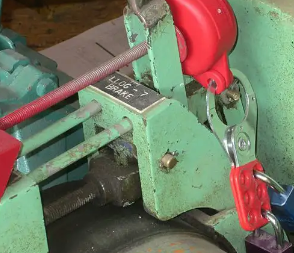Industrial workplaces are governed by OSHA rules, but this isn’t to say that rules are always followed. While injuries happen on production floors for a variety of reasons, of the top 10 OSHA rules that are most often ignored in industrial settings, two directly involve machine design: lockout/tagout procedures (LO/TO) and machine guarding.
Lockout/tagout procedures are ostensibly designed to protect employees from the unexpected startup of machinery or the release of hazardous energy during service or maintenance activities. For a variety of reasons, however, these procedures are often bypassed or abbreviated, and this can result in injury or death.
Lockout/tagout procedures are ostensibly designed to protect employees from the unexpected startup of machinery or the release of hazardous energy during service or maintenance activities. For a variety of reasons, however, these procedures are often bypassed or abbreviated, and this can result in injury or death.
According to OSHA, three million US workers service equipment, and these people face the greatest risk of injury if lockout/tagout procedures are not properly followed. The federal agency estimates that compliance with LO/TO standard (as governed by Standard 29 CFR 1910) prevents an estimated 120 fatalities and 50,000 injuries each year. A lack of compliance leads directly to lost lives and injuries: One study conducted by the United Auto Workers (UAW) found that 20% of fatalities that occurred among their members between 1973 and 1995 (83 out of 414) were attributed directly to inadequate LO/TO procedures.

Post time: Jul-27-2022






